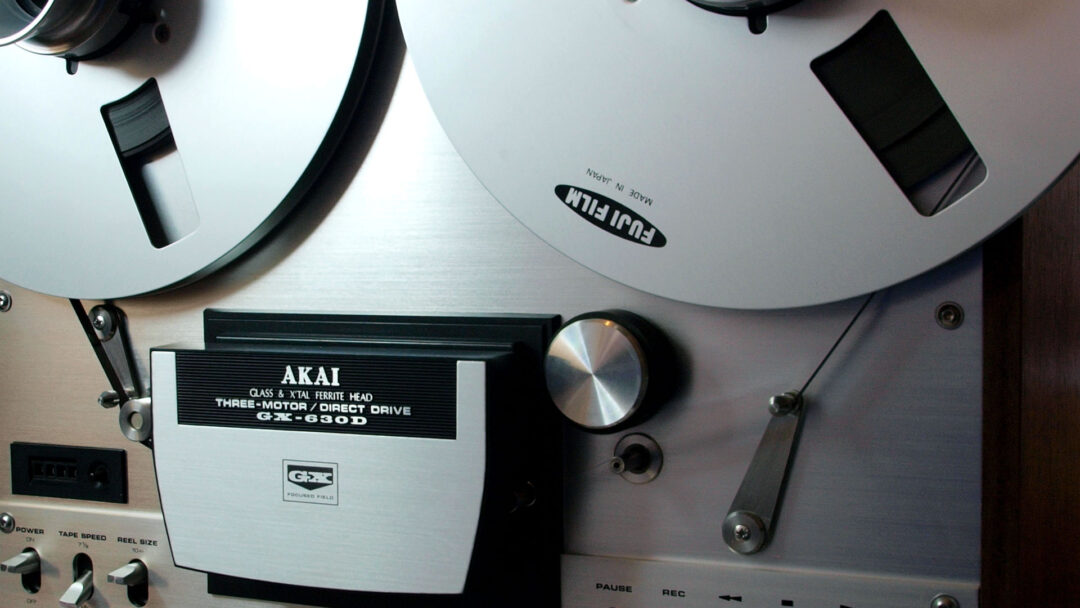Continuing our series on Buying a Reel-To-Reel, here are some considerations and tips on buying used reel-to-reel equipment.
Buying a used reel-to-reel
1. Seven inch or 10 inch?
A 10-inch deck will usually sound the same in comparable consumer models, but is often twice the price of a comparable seven-inch deck. Higher-end 10½-inch reel-to-reel decks may have better sounding electronics than the seven-inch decks, although many seven-inch and 10-inch models within a specific brand have very little difference in the record and play circuits, it’s only the mechanism that changes.
2. Auto reverse or not?
Auto reverse can add $100 to $500 to the cost of a buying used reel-to-reel deck. There are also additional mechanical and electronic parts adding to the complexity of the machine. Decide whether you really need it or not.
3. How are you planning to use it?
Are you looking for a deck to copy old tapes to MP3 or CD, and do you not need the deck afterwards? If yes, a lower end deck is for you. You can even get away with one that has a faulty record mechanism. Or is this a long-term vintage audio investment? If long term, definitely get a higher end deck.
Rule # 2 when buying a used reel-to-reel:
A good working reel-to-reel that is post 1973 and in good working condition should sound very close on playback as to what the recorded source is.
This is a very easy 2 minute test that can be done with two simple things: A music source (CD player, MP3, smartphone, etc) with an appropriate patch cord to connect to the reel-to-reel, and a pair of good quality headphones to listen to the tape and source with.
Assuming you or the seller knows how to use the tape deck, record a minute or two of music, while listening to the source through the headphone jack. If it’s your music that you brought with you, you probably already know what that song should sound like. If the RTR is a 3 head unit, use the source/tape monitor switch to switch between the source and recorded tape playback (more on that later). If it’s a 2 head deck, concentrate on the source bass and treble sounds, stop the tape, rewind it, and play it back. Does the bass and treble sound the same? Are both channels equal in level? Does the tape play back louder or quieter than the source? Are the input line level controls noisy (do they crackle or cut out ) when you turn them?
If the tape sounds very close to the original, then chances are the machine is in good working shape. If the bass is a bit punchier, or the treble has a bit of a boost on the tape playback, the deck most likely isn’t quite set up for the brand or type of tape being used. This isn’t really a concern, a tech can usually adjust the internal bias and equalization of the deck to minimize that change. What you should be concerned with is if there is a significant lack of treble in the playback compared to the source. This can also mean that the tape deck isn’t set up for the tape, it can mean dirty heads, but worst case it is worn heads, which can be expensive to fix.
Now.. why did I say to get a ‘post 1973’ deck above? From the 100s of used reel-to reel decks that I’ve serviced, I’ve found that many (but not all) pre 1973 decks need a lot of work. This is partially due to earlier designs, and many decks use one motor to drive the entire mechanism. Some motors are known to fail, and replacements are hard and expensive to get. Post 1973, and deck design improved, some machines were already using direct drive motors, and solenoid operation generally made decks more reliable, with simpler mechanisms compared to mechanical ones. Again, there are exceptions, but usually 8 out of 10 decks that I get in for service that are pre 1973 aren’t worth repairing. It’s just a rough guideline.

